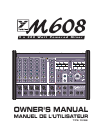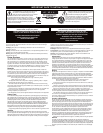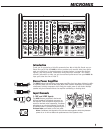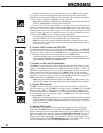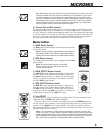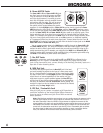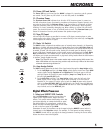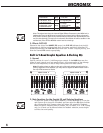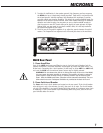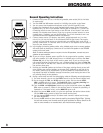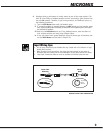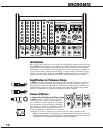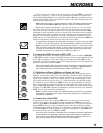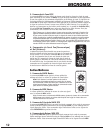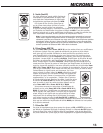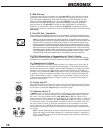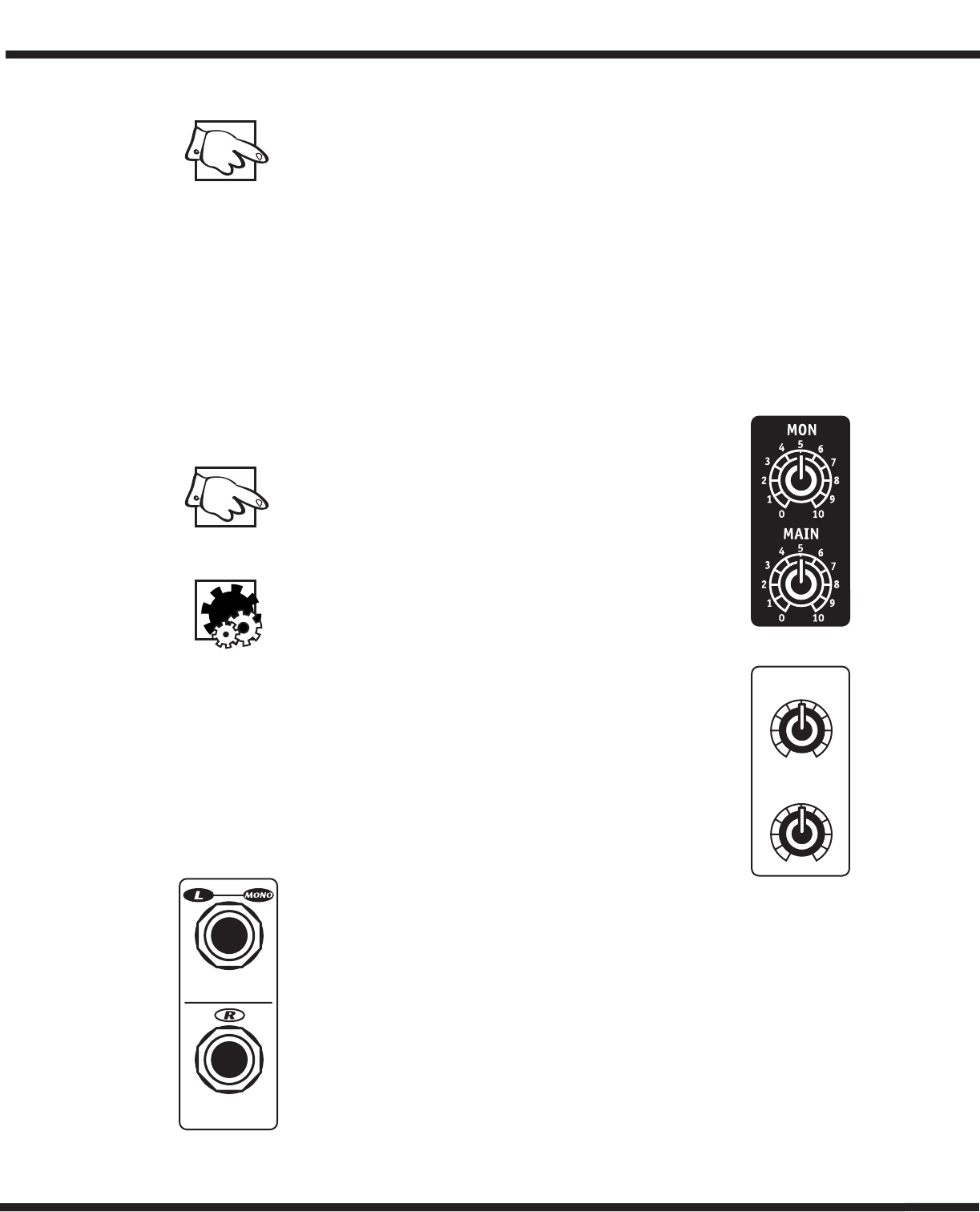
3
MICROMI
X
Tip: Alternatively, this signal at this jack can be connected to the input of an exter-
nal stereo effects unit and returned via channel 5/6 or 7/8 However, if you do not
require any effects at all, the effects bus output signal can be connected to the
input of an additional monitor system or another amp/speaker system via the EFX
Out/Footswitch jack using a standard balanced patch cord. In this case, the EFX
controls would act as send controls to achieve a semi-separate mix. Remember
that the channel LEVEL controls also affect this signal.
6. Channel Pan and Bal Controls
The signal balance of each channel going to the left and right main PA channels can be
adjusted by the Pan control in channels 1 to 4, and by the Bal control in channels 5/6
and 7/8. Turning this control counterclockwise towards the L will increase the signal level
in the left channel to a maximum of 3 dB while also reducing the level in the right chan-
nel to zero. Turning the control clockwise towards the R will increase the signal level in
the right channel while also reducing the signal level in the left channel.
Master Section
1. MAIN Master Control
The MAIN master control adjusts the overall level of the main
mix, the PA volume.
Note: To ensure maximum signal headroom and clarity, set
the channel LEVEL controls first for a good signal without
clipping, then set the master for the overall volume desired.
2. MON Master Control
The overall level of the monitor mix is adjusted with the MON
master control.
Note: As with the MAIN master, set the MON
master to deliver the desired volume after set-
ting the channel sends.
3. MAIN EFFECTS Return Control
The MAIN EFX control regulates the amount of signal going
from the output of the internal Digital Effects Processor to
the MAIN mixing bus where it is mixed with the dry signals
directly. It controls the intensity of the effects on the left
and right MAIN output signals.
4. MON EFFECTS Return Control
The MON EFX control regulates the amount of signal going
from the output of the internal Digital Effects Processor to
the MON mixing bus where it is mixed with the dry signals
directly from the channel MON send controls. It controls the
overall effects intensity for the MON Out signal.
5. Post-EQ OUT
These jacks offer a variety of patching and routing options. They are positioned in the
signal path after the M608 main graphic equalizers.
These bus signals are at line level, not speaker level (use the SPEAKER outputs on
the rear panel to drive speakers). Using signals from these jacks has no effect on the
operation of the M608's built-in power amplifier. This makes it possible to feed an
external power amplifier, or even multiple inter-connected power amps, while the inter-
nal power amplifier is functioning.
Note: It is not necessary to have speakers connected if you’d like to use the unit
strictly as a mixer. If a mono signal is required, possibly to feed a mono-house PA or
another amp/speaker system, use the L/Mono Post-EQ jack. Mono operation of this
jack is switched to left channel only as soon as a jack is inserted in the L Post-EQ
jack. They follow the operation of the Main/Mon switch described below.
0
5
28
7
6
4
3
91
10
0
5
28
7
6
4
3
91
10
MON EFX Rtn
MAIN EFX Rtn
Post-EQ
MAIN OUT
Post-EQ
MON OUT



